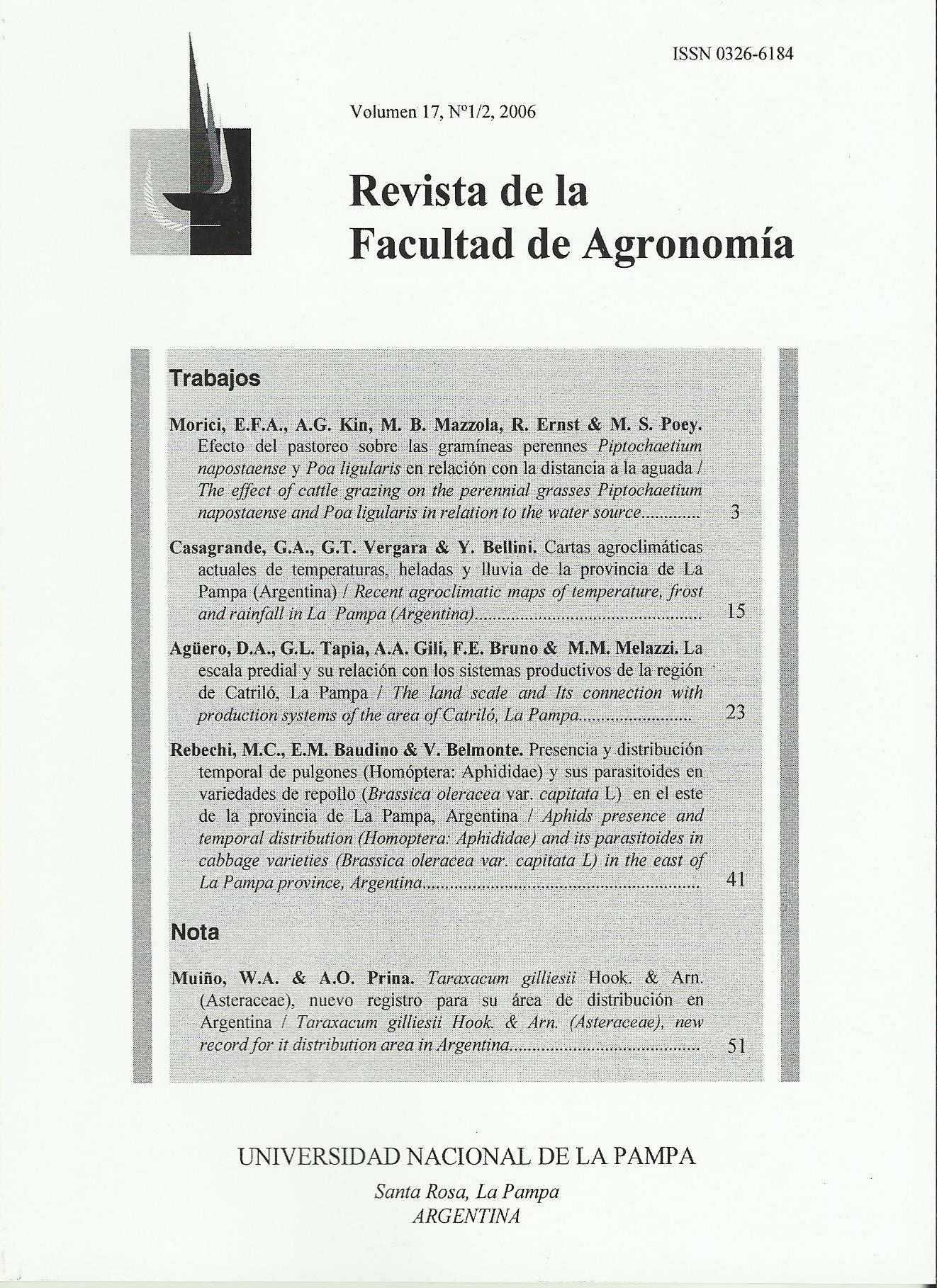La escala predial y su relación con los sistemas productivos de la región de Catriló, La Pampa
Palabras clave:
Heterogeneidad, Productores Agropecuarios, TipologíaResumen
La política económica argentina predominante en los años noventa produjo importantes cambios en el sector agropecuario. En este contexto, los productores de la región de Catriló-La Pampa, experimentaron una importante heterogeneidad en sus distintas características. El objetivo general del trabajo consistió en abordar un estudio sobre las principales características que presentan los productores agropecuarios de Catriló. Además se buscó establecer la relación entre distintas variables como escala predial, capacitación, tiempo dedicado a gestión, diversidad de la producción; y realizar una estratificación de los productores, en caso de comprobar la existencia de heterogeneidad entre los mismos. Para tal fin se trabajó con estadística descriptiva y el método Chi Cuadrado. En virtud de una importante heterogeneidad, se estableció la existencia de tres grupos de productores a través de la estratificación y de ellos, se destaca aquel de mayor escala con mayor capacidad empresarial por sus estrategias y dotación de recursos que le permite disponer de una menor vulnerabilidad en relación a los otros grupos. El sector agropecuario regional se caracterizó por una menor cantidad de establecimientos con mayor tamaño predial, con predominio de la ganadería en los sistemas de menor escala y una agricultura "minera" creciente en los sistemas de mayor escala. Se consolida así un modelo con rentabilidad económica de corto plazo, más flexible pero menos sustentable en lo social y ambiental. La caracterización de cada grupo de productores permitirá diseñar políticas que contemplen las restricciones que enfrentan los sistemas regionales más vulnerables y tiendan a atenuar el impacto del modelo predominante.
Descargas
Publicado
Número
Sección
Licencia
La Editorial de la Universidad Nacional de La Pampa (EdUNLPam) exigirá a los/as autores/as la firma del siguiente documento:
La EdUNLPam lleva a cabo la publicación del artículo: (Título del Artículo) en SEMIÁRIDA Rev.Fac.Agron UNLPam ISSN 2362-4337 (impresa) ISSN 2408-4077 (en línea), del cual el/los abajo firmantes son autores de una o más partes. En el mismo acto, el/los autores entregan exclusivamente a la EdUNLPam todos sus derechos protegidos por las leyes de propiedad intelectual que rigen en la Argentina para reproducir, publicar, editar, fijar, comunicar y transmitir públicamente en cualquier formato o medio impreso o electrónico, inclusive internet, el artículo enviado a publicación e incluirlo en índices o bases de datos nacionales e internacionales. A cambio, la EdUNLPam entrega a los autores la autorización para la publicación o reimpresión con ines académicos y educativos en cualquier libro o medio de divulgación, con la sola obligación de citar el artículo original publicado en la EdUNLPam. Cada autor acuerda en que el material provisto a la EdUNLPam es un trabajo original, que no ha sido impreso o publicado en cualquier otro medio con anterioridad y que no vulnera derechos de terceros. El Primer autor tendrá la posibilidad de leer y corregir el artículo ya editado como “prueba de galera”, pero si el autor no devolviera esas correcciones de la prueba de galera dentro del tiempo especificado, el proceso de producción y publicación podrá proseguir sin la aprobación del autor. El/los autor/es no recibirán compensación monetaria de la EdUNLPam por el uso del material contenido en este artículo y asumen la responsabilidad de las opiniones vertidas en él.






.png)



22.png)


.jpg)




.jpg)
10.png)



